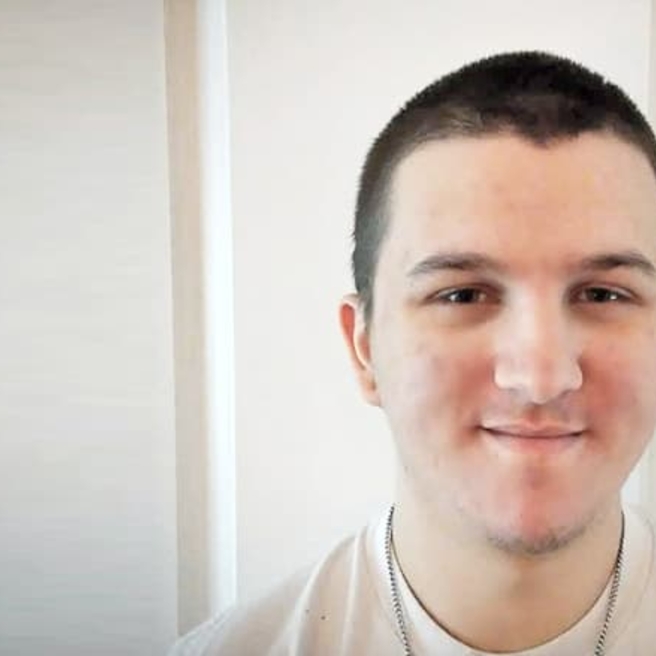What is tetralogy of Fallot (TOF)?
Tetralogy of Fallot is a congenital heart defect. It has four characteristics:
- Ventricular septal defect (VSD): a hole between the two bottom chambers (the ventricles) of the heart that sends blood to the body and lungs.
- Overriding aorta: the aorta, the large artery that takes blood to the body, is on top of both ventricles, instead of just the left ventricle as in a normal heart.
- Pulmonary stenosis: a narrowing of the pulmonary valve, the area below the valve, or the pulmonary arteries, which carry blood from the heart to the lungs.
- Right ventricular hypertrophy: the wall of the right ventricle is thicker than normal because of the large hole in the heart.

Learn more about tetralogy of Fallot from the experts at Children's Hospital of Philadelphia's Cardiac Center in the video series below.
Signs and symptoms of tetralogy of Fallot
The symptoms of tetralogy of Fallot include:
- Blue or purple tint to lips, skin and nails (cyanosis)
- Heart murmur: the heart sounds abnormal when a doctor listens to it with a stethoscope
- In older children, abnormal shape of the fingertips ("clubbing")
- Blue spells during which oxygen levels drop; lips and skin will become bluer, and the child will become fussy or irritable and then sleepy or unresponsive
Some children with a more severe form of tetralogy of Fallot may also have pulmonary atresia, a condition in which the pulmonary valve has not formed correctly, is sealed or cannot open properly. In these cases, the surgery and course can be much more complicated especially if the pulmonary arteries (vessels that provide blood to the lungs) are small or absent.
In rarer cases of TOF, the pulmonary valve leaflets are missing and the blood can leak back to the right ventricle from the lungs (absent pulmonary valve syndrome) and this can lead to very large pulmonary arteries that can push on the baby’s airways and make it harder to breathe. These children often have problems with the trachea (the tube that carries oxygen to the lungs) and the smaller airways to their lungs (bronchi) and sometimes they need to be on a breathing machine for a long time. Occasionally they will need a tracheostomy (hole in the neck connected to the airway to provide oxygen to the body) as well.
Testing and diagnosis of TOF
Tetralogy of Fallot may be diagnosed with fetal echocardiogram (ultrasound) before your baby is born. Our Fetal Heart Program will prepare a plan for delivery and care immediately after birth.
Another common time for diagnosis of tetralogy of Fallot is after birth, but before your newborn leaves the hospital. A doctor may hear a heart murmur or see a blue tint to the skin while examining your child before discharge.
After your child leaves the hospital, two other common times TOF may be suspected is:
- During a routine newborn checkup with your baby’s primary care pediatrician
- At home by a parent or relative who notices a blue tint to the baby’s pallor
Diagnosis of tetralogy of Fallot may require some or all of these tests:
- Pulse oximetry: a noninvasive way to monitor the oxygen content of the blood
- Electrocardiogram (ECG): a record of the electrical activity in the heart
- Echocardiogram (also called "echo" or ultrasound): sound waves create an image of the internal structure of the heart
- Chest X-ray
- Cardiac MRI: a three-dimensional image that shows the heart's structures in detail
- Cardiac catheterization: a thin tube (catheter) is inserted into the heart through a large vein in the leg, and guided to the heart to take measurements throughout the heart
A number of children with TOF also have genetic syndromes such as DiGeorge syndrome, Trisomy 21 (Down syndrome), Alagille syndrome or chromosome 22q11.2 deletion syndrome. Genetic testing (a blood test) may be part of an evaluation.
Treatment for tetralogy of Fallot
Surgery is required to repair tetralogy of Fallot. At Children’s Hospital of Philadelphia (CHOP) we typically perform open-heart surgery in the first few months of life to patch the hole (ventricle septal defect) in the heart and widen the pulmonary valve or artery.
In some cases, depending on the unique needs of the patient, we will perform a temporary repair until a complete repair can be done. The temporary repair involves connecting the pulmonary arteries (which carry blood from heart to lungs) with one of the large arteries that carry blood away from the heart to the body. This increases the amount of blood that reaches the lungs, and so increases the amount of oxygen in the blood. This can be done by surgery with what is called a Blalock-Taussig-Thomas shunt, or in the cardiac catheterization laboratory with a patent ductus arteriosus stent.

After surgery, your child will initially recover in the Evelyn and Daniel M. Tabas Cardiac Intensive Care Unit (CICU), where they will receive around-the-clock attention from a team of dedicated cardiac critical care medicine specialists and specialty trained nurses and support staff. As your child’s condition improves, they will be transferred to the Cardiac Care Unit and then discharged home.
Outlook for Tetralogy of Fallot
Today, because of enormous strides in medicine and technology, most children with heart conditions such as tetralogy of Fallot go on to lead healthy, productive lives as adults. Some children with TOF will experience heart problems later in life, including a leaky heart valve and/or irregular heartbeat (arrhythmia). Medication or repeat surgery may be needed.
In particular, many children who have TOF will need to have their pulmonary valve (the valve between the right ventricle and the lungs) replaced in adolescence or early adulthood because after surgery it leaks and can cause progressive damage to the right ventricle.
Follow-up care for TOF
Early years (0-5 years)
As a group, children with complex congenital heart defects who have had open heart surgery as infants are at a higher risk for neurodevelopmental issues when compared to children without congenital heart defects. The Cardiac Center at CHOP created the Cardiac Kids Developmental Follow-up Program to provide evaluation, screening and clinical care for children with complex congenital heart disease who are at risk for neurodevelopmental problems.
Through age 18
Children who have had surgical repair of tetralogy of Fallot will require lifelong care by a cardiologist. At CHOP, our pediatric cardiologists follow patients until they are young adults, coordinating care with the child’s primary care physician. Patients will need to carefully follow their doctors' advice, including continuing any prescribed medications and, in some cases, limiting exercise.
Into adulthood
Adults born with tetralogy of Fallot must continue to see a cardiologist throughout their lives. CHOP’s Cardiac Center can help with the transition to an adult cardiologist.
The Philadelphia Adult Congenital Heart Center, a joint program of CHOP and Penn Medicine, meets the unique needs of adults who were born with heart defects like TOF.

Patient Outcomes at the Cardiac Center
Children’s Hospital of Philadelphia's pediatric heart surgery survival rates are among the best in the nation.
Resources to help
Cardiac Center Resources
We know that caring for a child with a heart condition can be stressful. To help you find answers to your questions – either before or after visiting the Cardiac Center – we’ve created this list of educational health resources.
Reviewed by Meryl S. Cohen, MD, MSEd
Reviewed on 08/05/2024


